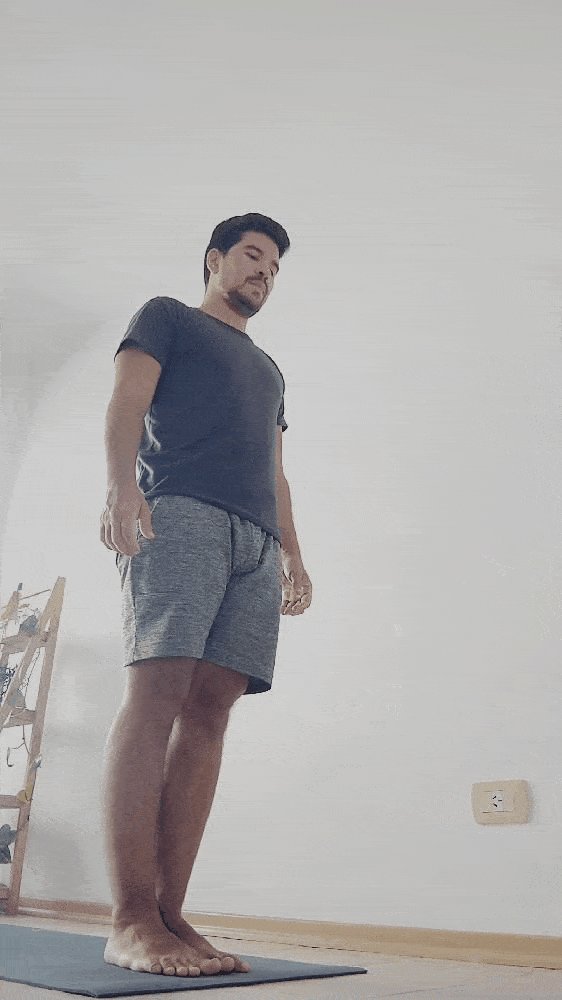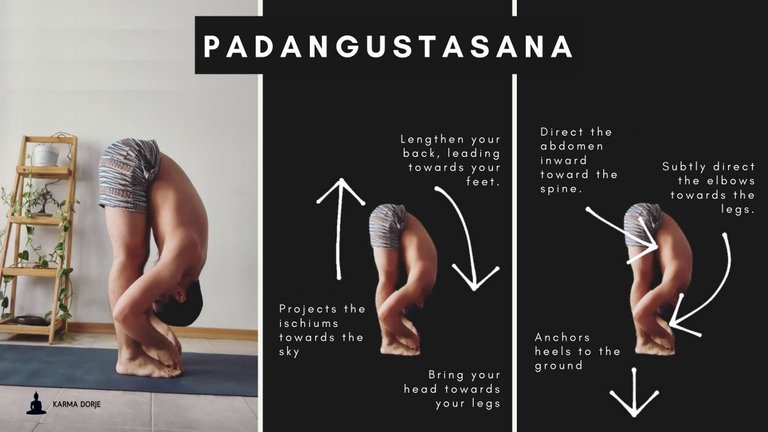
Versión English/ Español
Hello friends,
Today I wanted to talk to you a little bit about Yoga Postures - Asanas-. Normally I don't share much about Asanas, because I try to transmit with Yoga something more than just a body posture but the truth is that when we cultivate calmness and the cessation of disturbances with Yoga practices, we are also doing it with the body.
According to Buddha: "the body and the mind are an indivisible whole."
A same psycho-somatic whole that must be approached from different aspects, that is to say, not only the physical nor only the mental.
As I mentioned before, the practice of Yoga or the method on which I base myself is Ashtanga Vinyasa Yoga.
Ashtanga Vinyasa Yoga is a method taught by Sri K. Pattabhi Jois (student of T. Krishnamacharya), which is based on the movement together with the breath -Vinyasa- and that respects a specific sequence of postures (or series of asanas) structured in a very well thought out way to develop the vital energy -prana- in the body in a harmonious way and nourish and activate correctly the energetic channels -nadis-.
There are six fundamental postures that initiate the process of purification of the body in the primary series of Ashtanga Vinyasa Yoga. They make the body flexible. In this way, the purification process can be activated at a deeper level.
In this case, I wanted to show you the first posture of the fundamental sequence of the primary series -Yoga Chikitsa-, this posture is called: Padangustasana.
Padangustasa, literally means: The toe of the feet posture.
It is the first posture and consists of three vinyasas or three movements linked to the breath.
In the first vinyasa, inhaling, spread the feet apart at the width of the head and go down taking the toes. Open the chest facing forward.
In the second vinyasa, the posture occurs, exhaling we lower, bringing the head and chest towards the legs. It´s when we stay in it for five complete breaths.
In the third vinyasa, inhaling you go up with your hands on your hips, close your feet together and then relax your arms.
In order to understand the vinyasa, you can see the following image presented in GIF format.
Hoy quise hablarles un poco sobre posturas de Yoga. Normalmente no comparto mucho sobre las Asanas, porque intento transmitir con el Yoga algo más allá que una postura corporal pero lo cierto es que cuando cultivamos la calma y el cese de las perturbaciones con las prácticas de Yoga, estamos también haciéndolo con el cuerpo.
Según Buddha, el cuerpo y la mente son un todo indivisible. Un mismo conjunto psico-somático que debe ser abordado desde distintos aspectos, es decir, no solo lo físico tampoco solo lo mental.
Como ya lo he mencionado antes, la práctica de Yoga o el método en el que me fundamento es el de Ashtanga Vinyasa Yoga.
El Ashtanga Vinyasa Yoga es un método enseñado por Sri K. Pattabhi Jois (Alumno de T. Krishnamacharya), que se basa en el movimiento unido a la respiración -Vinyasa- y que respeta una secuencia especifica de posturas (o series de asanas) estructurada de una manera muy bien pensada para desarrollar la energía vital -prana- en el cuerpo de una forma armoniosa y nutrir y activar correctamente los canales energéticos correctamente -nadis-.
Hay seis posturas fundamentales que inician el proceso de purificación del cuerpo en la serie primaria de Ashtanga Vinyasa Yoga. Hacen que el cuerpo sea flexible. De esta manera, el proceso de purificación se puede activar a nivel más profundo.
En este caso, quise mostrarles la primera postura de la secuencia fundamental de la serie primaria -Yoga Chikitsa-, esta postura se llama: Padangustasana.
Padangustasa, significa literalmente: La postura del dedo del pie.
Es la primera postura y consta de tres vinyasas o tres movimientos unidos a la respiración.
En el primer vinyasa, inhalando, separa los pies a la anchura de la cabeza y baja tomando los dedos de los pies. Abrir el pecho hacia delante.
En el segundo vinyasa, se produce la postura, exhalando bajamos, llevando la cabeza y el pecho hacia las piernas. Es cuando nos mantenemos en ella durante cinco respiraciones completas.
En el tercer vinyasa, inhalando subimos con las manos en las caderas, cerramos los pies juntos y luego relajamos los brazos.
Para entender el vinyasa, puedes ver la siguiente imagen presentada en formato GIF.


In addition to seeing the posture and how to enter it, I share some tips to keep in mind during the stay.
Photo in English:

Además de ver la postura y su manera de entrar en ella, les comparto algunos tips a tener en cuenta durante la permanencia.
Foto en Español:


Beneficts/ Beneficios
This posture, and the following one (padahastasana), play an important role in the process of purification of the body within the primary Ashtanga Yoga series. They reduce the accumulation of fat in the abdomen and waist. They also stimulate and improve the functioning of the internal organs at the abdominal level, preventing and curing stomach diseases, and relieving constipation, which is one of the main factors of accumulation of toxins in the body.
It eliminates flatulence and cleanses the rectum and anus.
They tone the liver and spleen, as well as help to purify the urethra. It can also be beneficial in hemorrhoid problems.
Esta postura, y la siguiente (padahastasana), juegan un papel importante en el proceso de purificación del cuerpo dentro de la serie primaria de Ashtanga Yoga. Reducen la acumulación de grasa en el abdomen y la cintura. También estimulan y hacen funcionar mejor los organos internos a nivel abdominal, previniendo y curando enfermedades estomacales, y aliviando el estreñimiento, que es uno de los factores principales de acumulación de toxinas en el cuerpo.
Elimina las flatulencias y limpia el recto y el ano.
Tonifican el hígado y el bazo, así como ayudan a purificar la uretra. Puede ser también beneficiosa en los problemas de hemorroides.

The idea is that the posture is sustained taking into account these suggestions, but always giving MUCH MORE importance to breathe in a comfortable and stable way, because according to the Yoga-Sutras of Patanjali:
"The posture should be comfortable and stable."
The interpretation of this phrase, from my perspective is that each body is different and to determine a beneficial behavior in the posture, the breath has to have these qualities explained in the Yoga Sutra, of comfort and stability at the moment of permanence.
La idea es que la postura sea sostenida tomando en cuenta estas sugerencias, pero siempre dando MUCHA MÁS importancia a respirar de una manera cómoda y estable, porque segun los Yoga-Sutras de Patanjali:
"La postura debe ser cómoda y estable."
La interpretación de esta frase, desde mi perspectiva es que cada cuerpo es diferente y para determinar un comportamiento beneficioso en las postura, la respiración ha de tener estas cualidades explicadas en el Yoga Sutra, de comodidad y estabilidad al momento de la permanencia

Soy Julio Cesar Arvelo, practicante y profesor de Ashtanga Yoga y Meditación.
- Si te gustó este post y quieres seguir leyéndome, bienvenido a seguirme.
I am Julio Cesar Arvelo, practitioner and teacher of Ashtanga Yoga and Meditation.
- If you liked this post and want to keep reading me, welcome to follow me.
Mi redes sociales:

MINDFUL LIFE is a Natural Medicine project which supports meditators on HIVE
Discord II Community
Congratulations @karmadorje! You have completed the following achievement on the Hive blockchain and have been rewarded with new badge(s) :
Your next target is to reach 900 replies.
You can view your badges on your board and compare yourself to others in the Ranking
If you no longer want to receive notifications, reply to this comment with the word
STOPCheck out the last post from @hivebuzz: